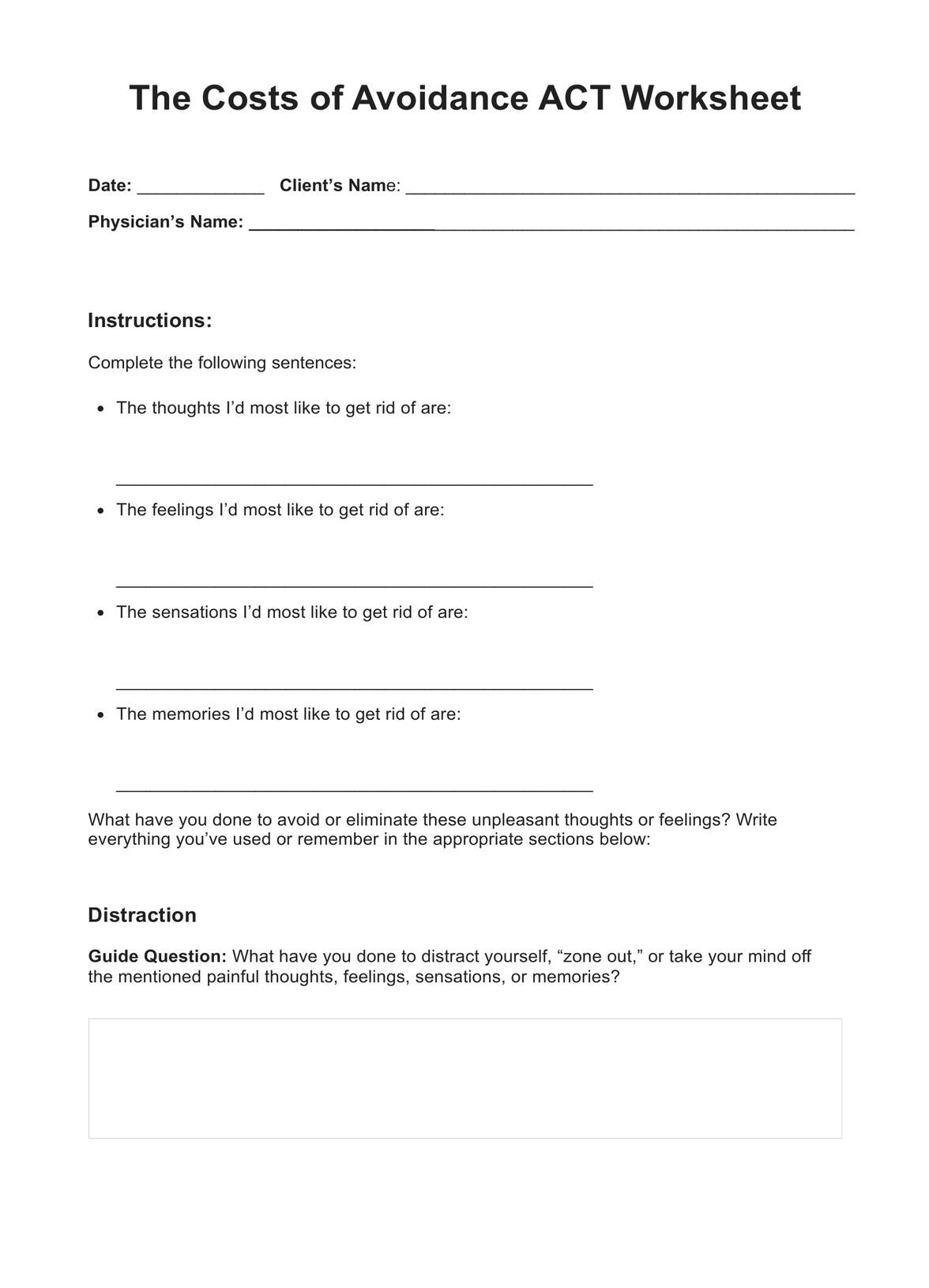A client usually takes 30 minutes to an hour to accomplish “The Costs of Avoidance ACT Worksheet.”

The Costs of Avoidance ACT Worksheet
With The Costs of Avoidance ACT Worksheet, your patient can better identify what they get rid of, how to avoid them, and the costs of avoiding them.
The Costs of Avoidance ACT Worksheet Template
Commonly asked questions
It can help them be more self-aware of the thoughts/feelings/sensations/memories they’d like to eliminate and the strategies they usually rely on to avoid or eliminate unpleasant thoughts or feelings. If answered correctly, the ACT Worksheet can also help a person discern which of their strategies are effective and beneficial to their life.
Practitioners with patients who constantly have unpleasant thoughts or feelings can use this, preferably during the first meeting or session, so that the referring physician can get a glimpse into the patient’s experiences, thought processes, and coping strategies to tough situations.
EHR and practice management software
Get started for free
*No credit card required
Free
$0/usd
Unlimited clients
Telehealth
1GB of storage
Client portal text
Automated billing and online payments











